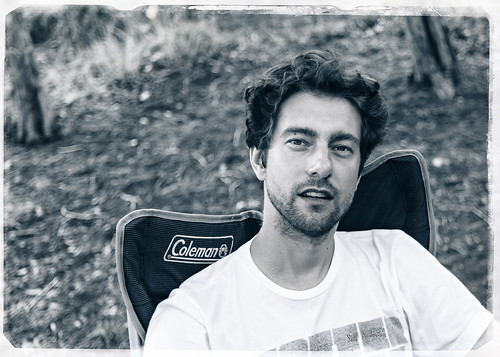There is a trend towards so-called authenticity in many fields. Reuters and perhaps some other news organizations no longer accept photos shot as digital RAW files. If you want your photo published by Reuters, you have to use your camera only as a recording device:
Reuters, the news and photography agency, has issued an outright ban on photographs captured and submitted in RAW format. Instead, freelance contributors must now only submit photos that were processed and stored as JPEG inside the camera.
According to Reuters, there are two reasons for this move. First, there’s the matter of alacrity: RAW images need to be processed by the photographer, which takes time—and when you’re reporting on a breaking story, sometimes you don’t have time. The second reason is much more contentious: Reuters wants its photographs to closely reflect reality (i.e. be journalistic), and it’s concerned that some RAW photos are being processed to the point where they’re no longer real.
“As photojournalists working for the world’s largest international multimedia news provider, Reuters Pictures photographers work in line with our Photographer’s Handbook and the Thomson Reuters Trust Principles,” a Reuters spokesperson told PetaPixel. “As eyewitness accounts of events covered by dedicated and responsible journalists, Reuters Pictures must reflect reality. While we aim for photography of the highest aesthetic quality, our goal is not to artistically interpret the news.”
(click here to continue reading Reuters bans submission of RAW photos: “Our photos must reflect reality.” | Ars Technica.)
Many photographers on Flickr and elsewhere boast about how little processing they perform on their photos. Perhaps this is a natural reaction to the digital photography world, filled with HDR photos looking like SciFi films, or over-saturated to the point of eye bleeding, or Instragram images where a photo is often tweaked with a filter with but a few seconds consideration. It is true that new photographers often over-process their photographs, yet that doesn’t make processing a tool to shy away from, only that someone has not yet learned to process well. I remember when I first starting fooling around with Photoshop with scanned prints: it was so easy to make gaudy, weird and obviously digital manipulations, I was learning how to use the tools. None of those experiments are online, or few, but I consider it part of the process of learning.
There was this example too:
You’ve probably heard by now that Steve McCurry is the latest to be caught up in a manipulation scandal. PetaPixel has reported that several examples of excessive Photoshopping of McCurry photos have come to light. A Facebook user named Gianmarco Maraviglia found this example:
Steve McCurry exampleStudy that for a couple of minutes and you can see how deep the changes go. Not as bad, arguably, as the example of the soccer-playing boys on PetaPixel where a whole person was removed. A photograph is in part a witness, and that’s part of what makes it unique: At that moment, that boy was there. He might not have been, but he was. The look of the world is inconvenient to our picture-contriving intent. But that’s part of what makes it so mysterious and rich.
By the late 1970s, the fundamental difference between photography and all the other methods of creating visual art had been worked out more or less completely. Photography was a matter of “hand and eye,” in the words of John Szarkowski, of recognition followed by the recording of the lens image more or less in an instant, and more or less as the lens saw it. Painting and other “plastic” (i.e., malleable) arts involved a back-and-forth over time: look, contemplate, evaluate, make changes; look, contemplate, evaluate, make more changes; and so on over and over, a process that could continue for days or weeks or even years.
(click here to continue reading The Online Photographer: The Ugliness of Beautification.)
Capturing the decisive moment is important, but much of what makes a photo a piece of art is more than just the mechanics. There is no one, perfect way to paint an apple or the curve of a woman’s hip, similarly, there is no ideal way to take and process a photograph. Art is expression, every artist has a different vision, whether or not they are new to the craft, or a seasoned professional, or somewhere in the middle, like myself.

Let The Words Roll Off Where They May
Most black and white photos you see these days are actually shot in color, that’s a manipulation. Digital cameras capture red, green, blue, that is not the same as an analog film camera with different kinds of film stock.
Nearly 98% of the time, I crop a bit or a lot (I typically use a 5×7 ratio to crop, a 1.4 ratio, my camera is more like 16 x 11, a 1.5 ratio), 99% of the time, I enhance color contrast, and boost saturation. I don’t usually remove elements – other than by cropping – but I have occasionally removed a distracting car fender, or telephone wire. Composition is more often handled at time of photograph, but sometimes as a street photographer, you don’t lots of time to frame and mentally crop. Photoshop allows me to continue the work at a later time. I use filters to change the dominant color mood of a photo – turning water from brackish green to aquamarine for instance; or use a filter to emulate various film stock: Velvia, T-Max, Tri-X 400, or Ilford, sepia, cyanotype, etc.
I reject that photography has to be journalistic and nothing else. Speaking for myself, of course, I’m more interested in artistic expression, using the language of film, and the language of poetry to capture the myriad facets of the world around me, in all its ragged, incomplete glory.














































